Development of Joint Rural Water Services in Finland, 1872–2022
Abstract
1. Introduction
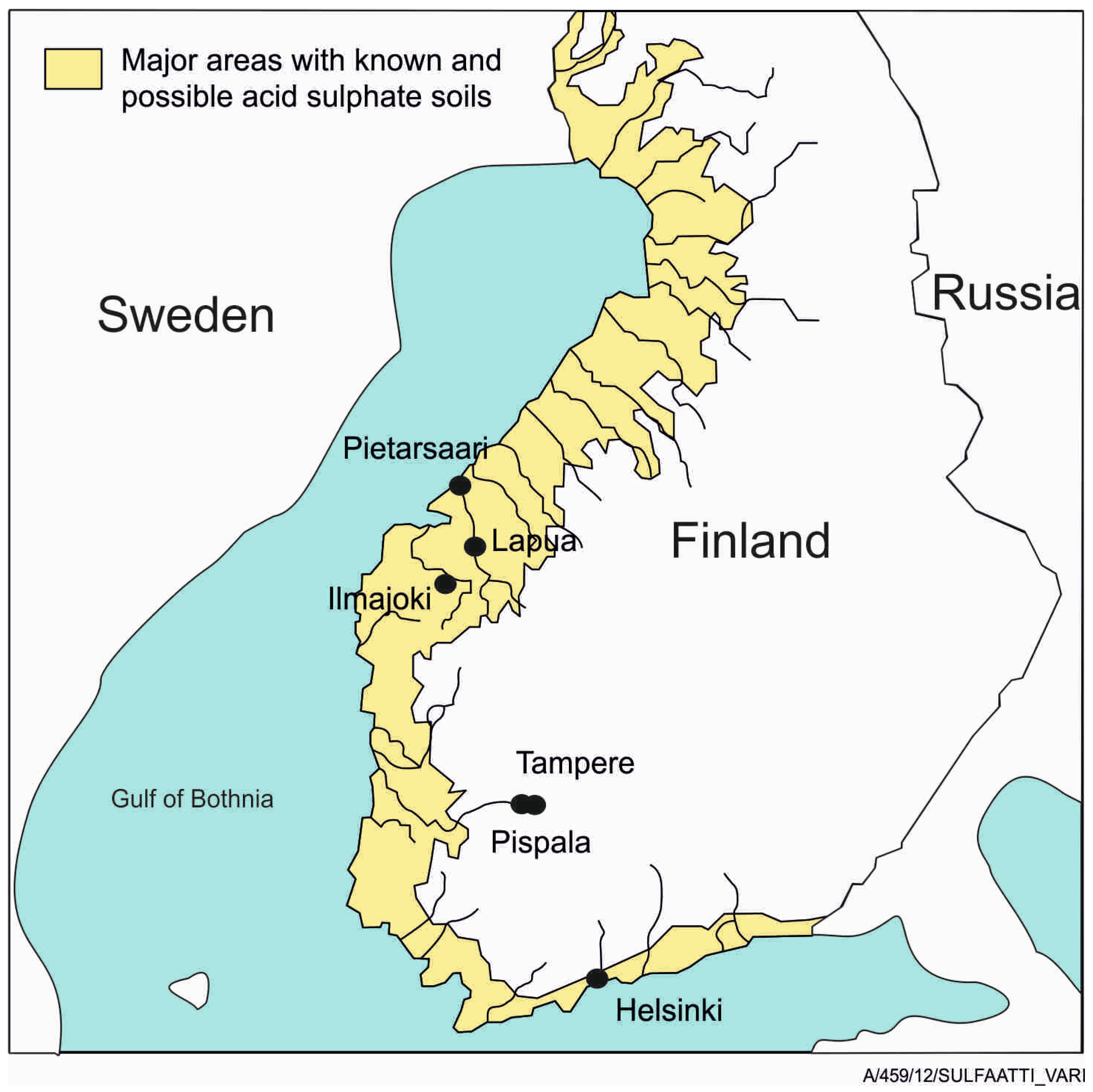
2. Research Methodology
3. Overall Development of Joint Rural Water Services from 1872 to 2022—Literature Review
3.1. Early Joined Water Supplies
3.2. The Postwar Rehabilitation Until the Recent Times
3.3. Water Co-Operatives and Case Pispala
3.4. Development Phases of Water Co-Operatives
3.5. Government Decree on Treating Domestic Wastewater in Areas Outside Sewer Networks
4. Results of Assessment
5. Discussion
6. Conclusions
- (i)
- Historically, rural water services have predominantly operated on a demand-based approach.
- (ii)
- The significant and influential long-term decisions assessed encompass the establishment of the first rural water co-operative in 1907, the enactment of the Land Acquisition Reform Act in 1945, the establishment of the Rationalisation of Households Committee in 1950, the initiation of domestic manufacturing of plastic pipes in 1954, and the introduction of the Water Act in 1961.
- (iii)
- The support from the European Union, central government, and local governments was further used for expanding rural co-operatives to expand the systems from the 1990s until the mid-2015s. Yet, this was carried out without properly considering the future responsibilities. While some of the latest co-operatives would be willing to hand over the responsibility to municipal utilities, the latter often refuse to even negotiate.
Author Contributions
Funding
Data Availability Statement
Acknowledgments
Conflicts of Interest
References
- World Health Organization. Guidelines for Drinking Water Quality: Small Water Supplies; WHO: Geneva, Switzerland, 2024; Available online: https://www.who.int/publications/i/item/9789240088740 (accessed on 28 August 2024).
- Hayward, K. Security, supply and sanitation. Source Editorial, 10 April 2024. [Google Scholar]
- Pacey, A. Technology is not enough: The provision and maintenance of appropriate water supplies. Aqua 1977, 1, 1–58. [Google Scholar]
- Kuusisto, E.; Raatikainen, M. The number and surface area of the lakes in Finland. Terra 1988, 102, 97–110. [Google Scholar]
- Anon, S.A. List of Lakes of Finland. Available online: https://en.wikipedia.org/wiki/List_of_lakes_of_Finland (accessed on 29 June 2025).
- Katko, T.S. Water!—Evolution of Water Supply and Sanitation in Finland from the Mid-1800s to 2000; Finnish Water and Wastewater Works Association: Helsinki, Finland, 1997. [Google Scholar]
- Hornamo, P. Käytännön Vesihuolto-Opas. Maamiehen käsikirjasto; Kirjayhtymä: Helsinki, Finland, 1959. [Google Scholar]
- Katko, T.S.; Lipponen, M.A.; Rönkä, E.K.T. Groundwater use and policy in community water supply in Finland. Hydrogeol. J. 2006, 14, 69–78. [Google Scholar] [CrossRef]
- Weppling, K.; Innanen, M.; Jokela, S. (Eds.) Life Lestijoki—Happamien Sulfaattimaiden Hoito; Maailman Luonnon Säätiö WWF: Helsinki, Finland, 1999. [Google Scholar]
- Österholm, P.; Åström, M. Quantification of current and future leaching of sulphur and metals from Boreal acid sulphate soils, W. Finland. Aust. J. Soil Res. 2004, 42, 547–551. [Google Scholar]
- Ylitalo, T.; Ylitalo, P. Puoli Vuosisataa Erinomaista Vettä Lapualle, Kauhavalle, Nurmoon ja Kuortaneelle, Lappavesi Oy 1972–2022; FINNA.FI: Lapua, Finland, 2022. [Google Scholar]
- Turunen, H. Lakeuden Joet. Etelä-Pohjanmaan Vesienkäytön Historia; Kytösavut XV, Etelä-Pohjanmaan Maakuntaliiton Julkaisuja: Seinäjoki, Finland, 1985. [Google Scholar]
- Lillja, J.L.W. Helsingin Kaupungin Vesijohtolaitos 1876–1936; Helsingin Kaupungin Vesijohtolaitos: Helsinki, Finland, 1938. [Google Scholar]
- Katko, T.S.; Juuti, P.S.; Pietilä, P.E. Key long-term decisions and principles in water services management in Finland, 1860–2003. Boreal Environ. Res. 2006, 11, 389–400. Available online: https://www.borenv.net/BER/archive/pdfs/ber11/ber11-389.pdf (accessed on 28 August 2024).
- North, D.C. Institutions, Institutional Change, and Economic Performance; Cambridge University Press: Cambridge, UK, 1990. [Google Scholar]
- Katko, T.S. The Use of Wooden Pipes in Rural Water Supply in Finland. Vatten 1997, 53, 267–272. Available online: https://www.tidskriftenvatten.se/tsv-artikel/the-use-of-wooden-pipes-in-rural-water-supply-in-finland/ (accessed on 28 August 2024).
- Peräkylä, O. Kairattujen puuputkien käyttö vesijohtoina. Maa-ja Vesirakentaja 1952, 1, 175–185. [Google Scholar]
- Katko, T.S. Finnish Water Services—Experiences in Global Perspective; Finnish Water Utilities Association: Helsinki, Finland, 2016; Co-published E-book, IWA Publishing: London, UK, 2017. [Google Scholar]
- Wäre, M. Maaseudun yhteiset vesi- ja viemärijohdot. Maanvilj. Vuosik. 1950, 1951, 82–88. [Google Scholar]
- Wäre, M. Maaseudun Vesihuolto. Mitä-Missä-Milloin, Kansalaisen Vuosikirja 1953; Otava: Helsinki, Finland, 1952. [Google Scholar]
- Wäre, M. Vesi ja sen kuljetus maaseututalouksissa. Maa-Ja Vesirakentaja 1952, 1, 43–56. [Google Scholar]
- Category: Kari Suomalainen. Available online: https://commons.wikimedia.org/wiki/Category:Kari_Suomalainen (accessed on 28 August 2024).
- Kotitalouden Rationalisoimiskomitea, Maaseudun Vedenhankinta- ja Viemäriolojen Parantaminen, Mietintö no. 1/1950; Rakennettu Hyvinvointi: Helsinki, Finland.
- Katko, T.S. The Development of Water Supply Associations in Finland and Its Significance for Developing Countries; Water Supply and Sanitation Division, Discussion Paper no. 8; The World Bank: Washington, DC, USA, 1992. [Google Scholar]
- Myllyntaus, T. Suomen energianhankinta. Retrospektiivinen Esitutkimus; Suomen Teknillinen Seura: Helsinki, Finland, 1980. [Google Scholar]
- Takala, A.; Arvonen, V.; Katko, T.; Pietilä, P.; Åkerman, M. Evolving role of water co-operatives in Finland—Lesson learnt? J. Co-Oper. Manag. 2011, 5, 11–19. [Google Scholar]
- Pietilä, P.E.; Vihanta, J. The role of co-operatives in the provision of water services in Finland. In WATERLAT-GOBACIT Network Working Papers; Castro, J.E., Katko, T.S., Pietilä, P.E., Vihanta, J., Juuti, P.S., Rajala, R.P., Orta, M., Portapila, M., Muñoz, A., Pérez, I., Eds.; Newcastle University: Newcastle, UK, 2019; Volume 5, pp. 6–22. [Google Scholar]
- Arvonen, V.; Kibocha, S.N.; Katko, T.S.; Pietilä, P. Features of Water Co-operatives: A Comparative Study of Finland and Kenya. Public Work. Manag. Policy 2017, 22, 356–377. [Google Scholar] [CrossRef]
- Katko, T. The need for “champions” in rural water supply. Waterlines 1994, 12, 19–22. [Google Scholar]
- Arvonen, V.; Juuti, R.; Katko, T. Modern Champions needed for rural water services: The case of Finland. Int. J. Co-Oper. Manag. under review.
- KWH Pipe. Pipe World Mag. 2009, 11, 22–23.
- Uponor, s.a. Uponor Infra Was Established Through a Merger with KWH Pipe; Uponor: Helsinki, Finland, 2012. [Google Scholar]
- Kaleva, newspaper archive, Oulu, Finland.
- Rautavaara, A. (Ministry for Foreign Affairs, Helsinki, Finland). Personal communication, 2 June 2025. [Google Scholar]
- The COWASH Project. Enhancing the Ethiopian WASH Sector and Working Towards the National Development Goals; CMP CoWASH Ethiopia: Addis Ababa, Ethiopia, 2020. [Google Scholar]
- Rautanen, S.-L. Access to Water? Dynamic Capacity Change for Sustainable Rural Water and Sanitation Services for All. Doctoral Dissertation, no. 1373, Tampere University of Technology, Tampere, Finland, 18 March 2016. Available online: https://trepo.tuni.fi//handle/10024/115220 (accessed on 28 August 2024).
- Stockholm Water Symposium, Innovating Water Governance: A Conversation with Karin Gardes. WaterFront Daily, 20 August 2023. Available online: https://worldwaterweek.org/news/innovating-water-governance-a-conversation-with-karin-gardes (accessed on 28 August 2024).
- Juuti, P.S.; Juuti, R.P.; Hukka, J.J.; Katko, T.S. SDG 6: Safe Water and Sanitation: Changing International Policies after WWII. In Before the SDGs. A Historical Companion to the United Nations Sustainable Development Goals; Gutmann, M., Gorman, D., Eds.; Oxford University Press: London, UK, 2022; pp. 176–209. [Google Scholar]
- Juuti, P. Pispalaan Suomen ensimmäinen vesiosuuskunta. In Ernomane Vesitehras, Tampereen Kaupungin Vesilaitos 1835–1998; Juuti, P., Katko, T., Eds.; Tampereen kaupungin vesilaitos: Tampere, Finland, 1998; pp. 74–87. Available online: https://trepo.tuni.fi/handle/10024/66324 (accessed on 28 August 2024).
- Vihanta, J. Suomen Taajamien Suuret Vesiosuuskunnat (Large Water Co-Operatives in Finnish Municipalities). Master´s Thesis, Tampereen Teknillinen Yliopisto, Tampere, Finland, 2013. Available online: https://trepo.tuni.fi/bitstream/handle/123456789/22093/Vihanta.pdf (accessed on 28 August 2024).
- The Association of Finnish Water Co-Operatives. Available online: https://svosk.fi/svosk-3/the-association-of-finnish-water-co-operatives/ (accessed on 28 August 2024).
- Government Decree on Treating Domestic Wastewater in Areas Outside Sewer Networks (209/2011). Available online: https://www.ecolex.org/fr/details/legislation/government-decree-on-treating-domestic-wastewater-in-areas-outside-sewer-networks-no-542-of-2003-lex-faoc064239/ (accessed on 8 October 2024).
- Laukka, V.; Kallio, J.; Herrmann, I.; Malila, R.; Nilivaara, R.; Heiderscheidt, E. Governance of on-Site Sanitation in Finland, Sweden and Norway; Report 8, Finnish Environment Institute: Helsinki, Finland, 2022; Available online: https://helda.helsinki.fi/items/b1c850e3-49f7-47b1-8d79-e5f40e8d767d (accessed on 28 August 2024).
- Kallio, J. Jätevesineuvonta Haja-Asutusalueilla 2011–2019. Loppuraportti. Suomen Ympäristökeskuksen Raportteja; 48/2020, Helsinki, Finland. Available online: https://vesi.fi/aineistopankki/jatevesineuvonta-haja-asutusalueilla-2011-2019-loppuraportti/ (accessed on 28 August 2024).
- Pihkala, K.U. The Land Settlement Program of Finland. Land Econ. 1954, 28, 147–159. [Google Scholar]
- Haapalainen, P. The Significance of the Subsidiarity Principle for the Development of the Finnish Society. Master’s Thesis, University of Tampere, Department of Regional Studies, Tampere, Finland, 1996. (In Finnish). [Google Scholar]
- Hukka, J.J.; Katko, T.S. Towards Sustainable Water Services: Subsidiarity, Multi-Level Governance and Resilience for Building Viable Water Utilities; Tampere University, CADWES Publications: Tampere, Finland, 2021; Available online: http://www.cadwes.com/publications/others/ (accessed on 28 August 2024).
- ICWE Secretariat. The Dublin Statement and Report of the Conference. In Proceedings of the International Conference on Water and the Environment: Development Issues for the 21st Century, Dublin, Ireland, 26–31 January 1992. [Google Scholar]
- European Parliament. s.a. Treaty on European Union (TEU). Available online: https://www.europarl.europa.eu/about-parliament/en/in-the-past/the-parliament-and-the-treaties/maastricht-treaty (accessed on 28 August 2024).
- Viitasaari, M. Vesihuolto kehittyvässä yhteiskunnassa—onko nykykäytännölle vaihtoehtoja? Vesitalous 1995, 36, 1–2. [Google Scholar]
- Mattila, H. Appropriate Management of On-Site Sanitation. Doctoral Dissertation no. 537, Tampere University of Technology, Tampere, Finland, 10 June 2005. Available online: https://trepo.tuni.fi//handle/10024/114828 (accessed on 28 August 2024).
- Mattila, H.; Santala, E.; Aho, J. Consumer managed co-operative—A solution for progressing wastewater management in rural areas. Water Sci. Technol. 2003, 48, 385–391. [Google Scholar] [PubMed]
- Anon 2022. Läntisen Suomen Vesihuoltostrategia 2050. Available online: https://www.ely-keskus.fi/tietoa-meista/suunnittelu-ja-seuranta/lantisen-suomen-vesihuoltostrategia-2050 (accessed on 28 August 2024).
- Foster, T.; Priadi, C.; Kotra, K.K.; Odagiri, M.; Rand, E.C.; Willetts, J. Self-supplied drinking water in low- and middle-income countries in the Asia-Pacific. npj Clean Water 2021, 4, 37. Available online: https://www.nature.com/articles/s41545-021-00121-6 (accessed on 28 August 2024).
- Theme: Unfinished Business of WASH in High-Income Countries. In Proceedings of the UNC Water & Health Conference, Chapel Hill, NC, USA, 14–18 October 2024; Available online: https://waterinstitute.unc.edu/our-work/2024-unfinished-business (accessed on 28 August 2024).
- Saladin, M. Community Water Supply in Switzerland-What Can We Learn from Acentury of Successful Operation? Skat Foundation: St Gallen, Switzerland, 2004; Available online: https://www.rural-water-supply.net/en/resources/313 (accessed on 8 October 2024).
- Suominen, A. (Doctoral student, Tampere University, Finland). Personal communication, 5 October 2024. [Google Scholar]
- Demes, J.A.E.; Nickerson, N.; Montekio, L.F.V.B.; Torres, P.; Dube, J.G.; Coq, J.G.; Pomey, M.-P.; Champagne, F.; Jasmin, E.R. What are the characteristics of the champion that influence the implementation of quality improvement programs? Eval. Program Plan. 2020, 80, 101795. [Google Scholar] [CrossRef]
- Whaley, L.; Cleaver, F.; Mwathunga, E. Flesh and bones: Working with the grain to improve community management of water. World Dev. 2021, 138, 105286. [Google Scholar] [CrossRef]
- European Commission, s.a. Rural Development. Available online: https://ec.europa.eu/regional_policy/policy/themes/rural-development_en (accessed on 28 August 2024).

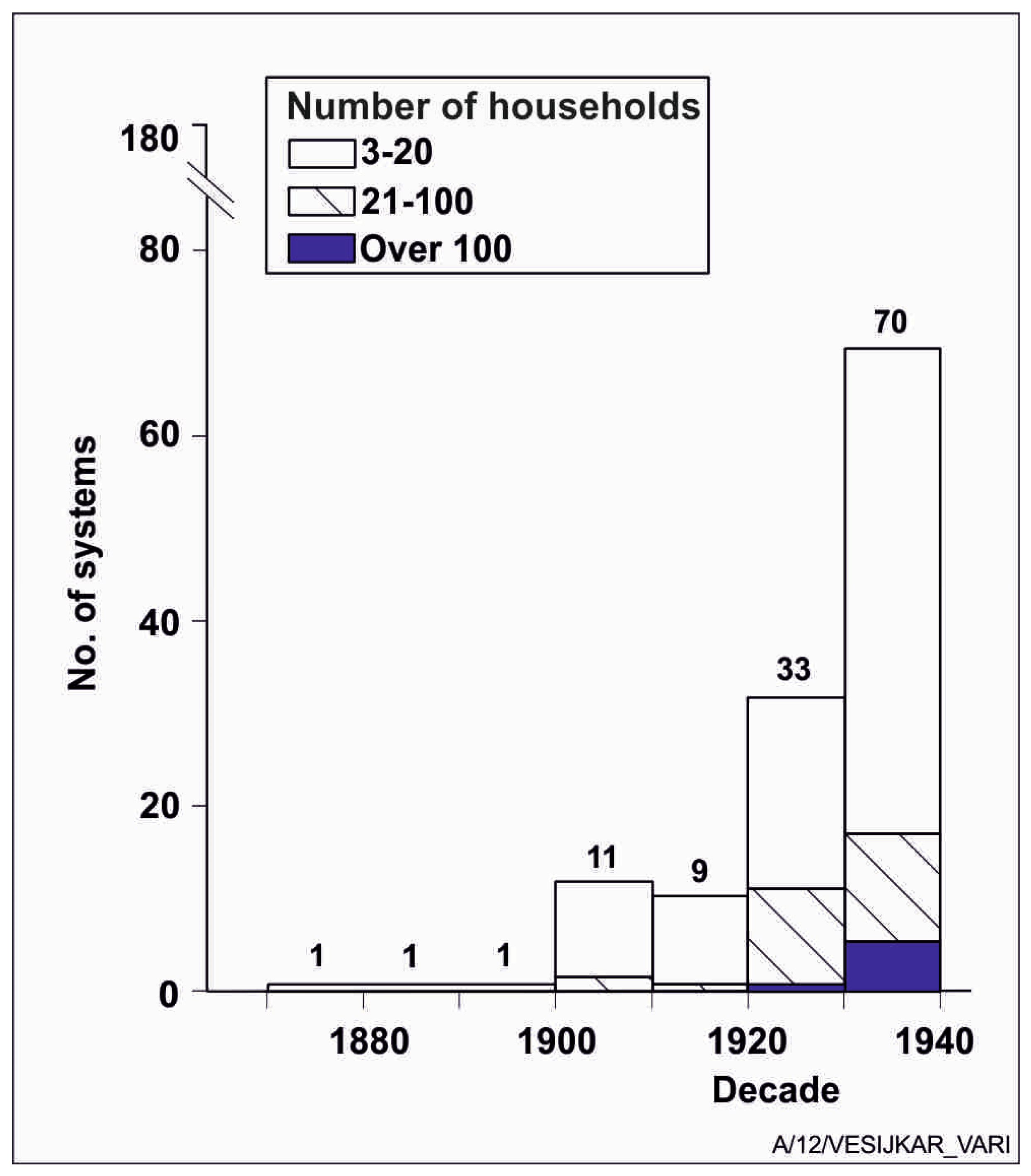
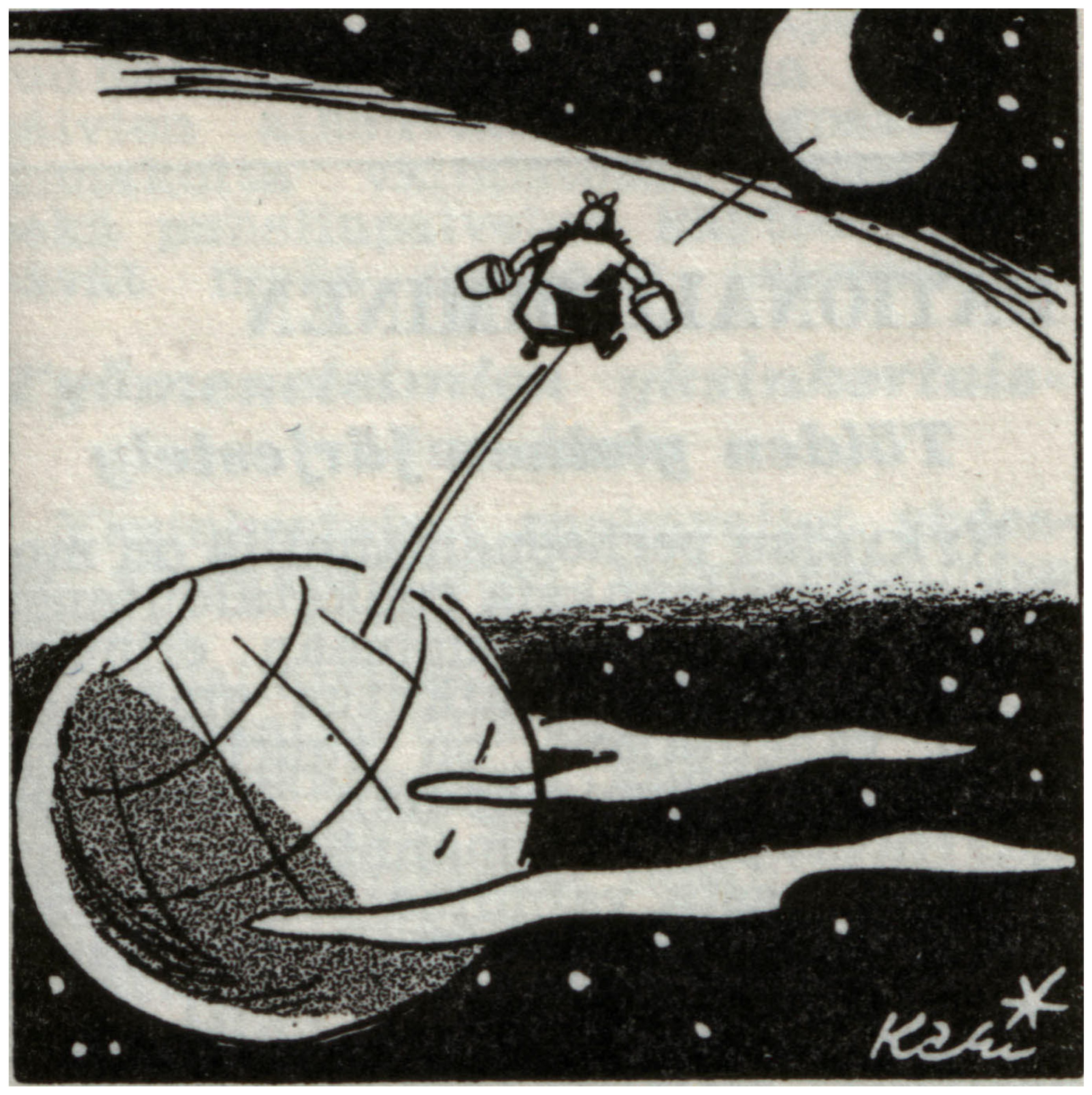
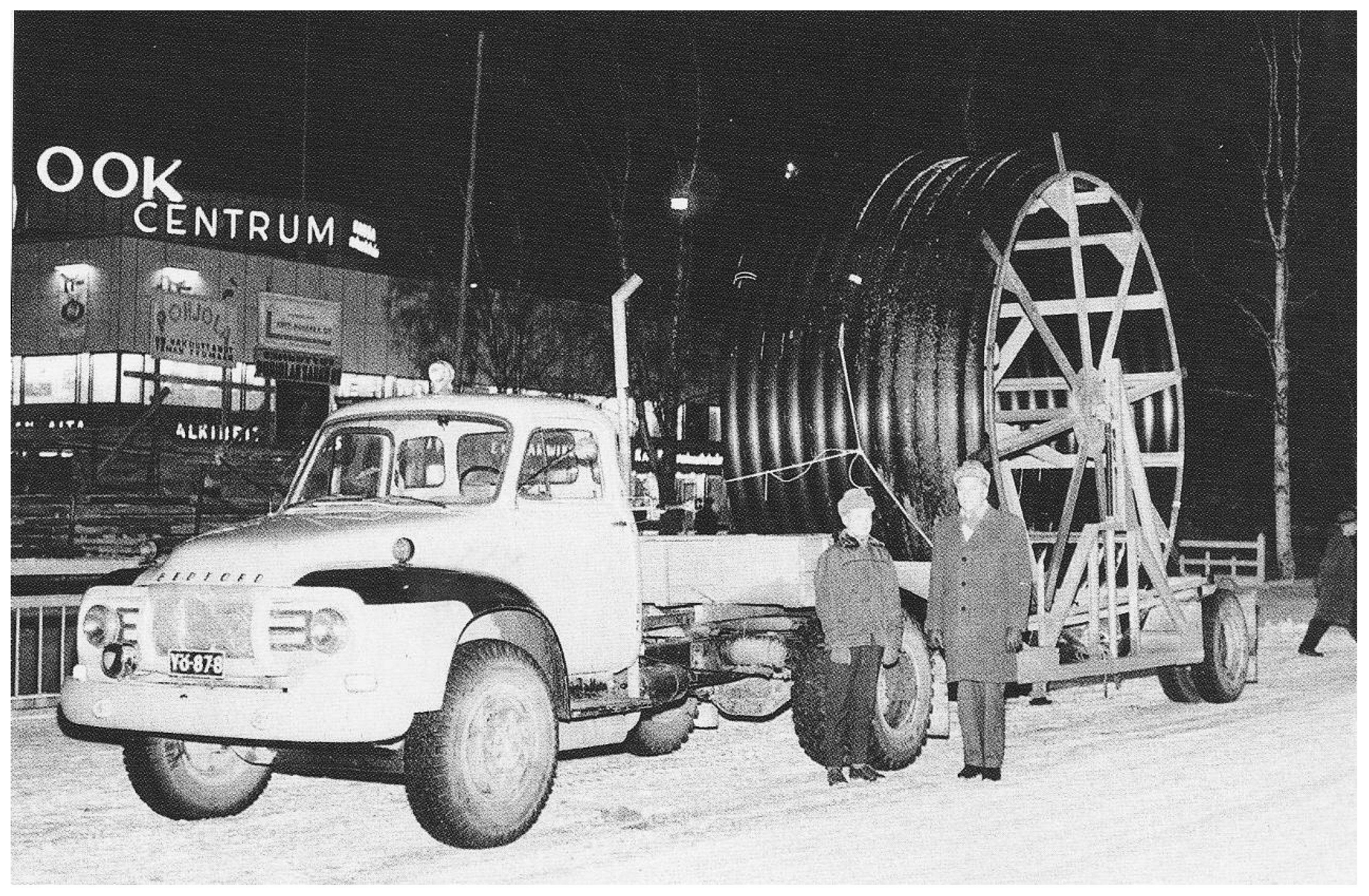
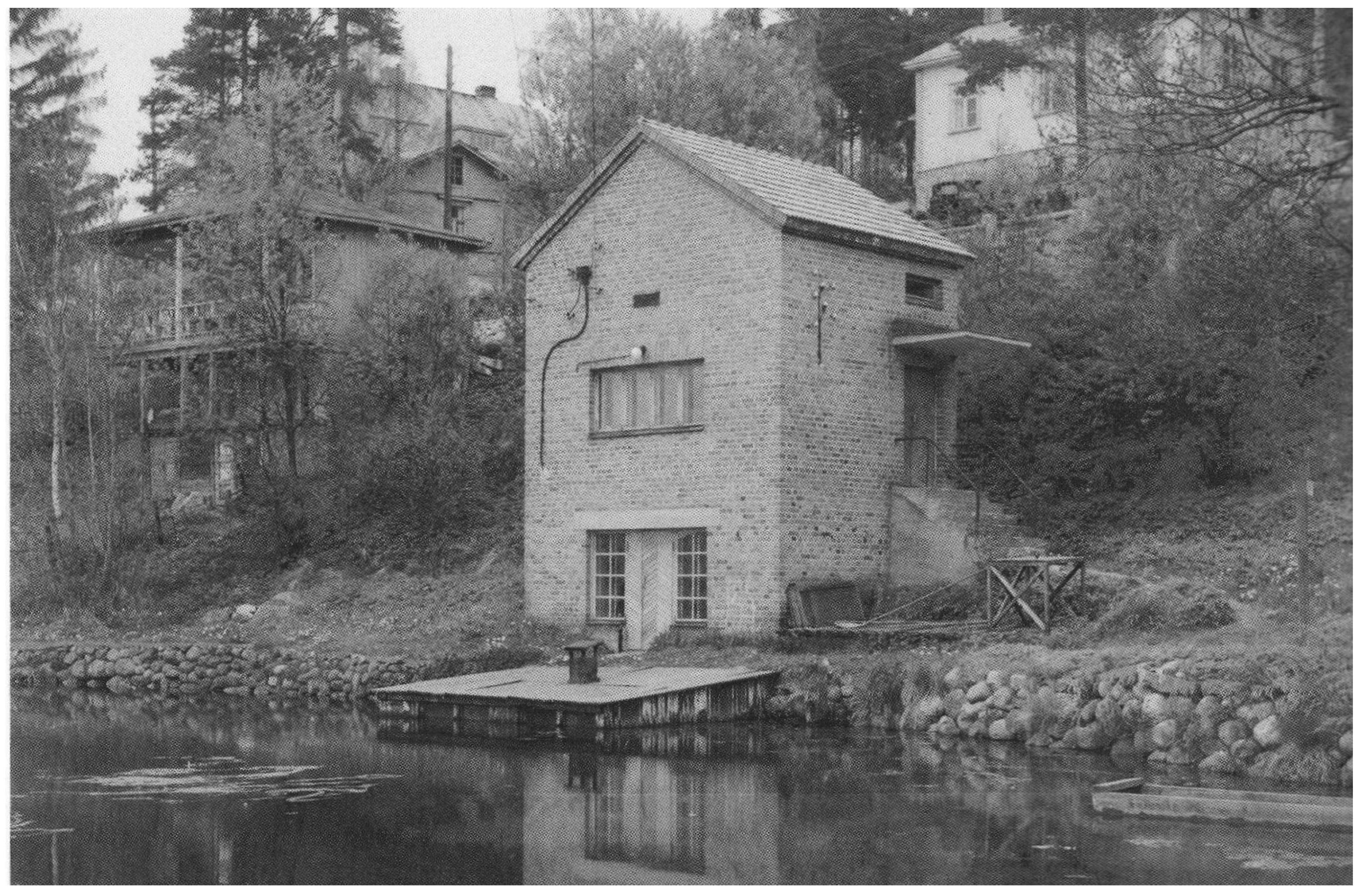
| Phase | Characteristics of Water Co-Operatives |
|---|---|
| I 1900–1950 | Built without financial support; willingness to continue as independent co-operatives is strong. |
| II 1945–1960 | Approximately 20 of them currently operate in mid-sized towns with competent staff. |
| III 1950–1970 | Stronger role of municipalities and state → loans and grants for organising rural water services. |
| IV 1975–1990 | Mostly in rural areas; actively encouraged and supported by municipalities; less independent than earlier co-operatives; weaker ownership, more passive members. |
| V 1990–2017 | Mostly in rural areas; also, sanitation; external pressure significant in setting up; often planned as temporary solutions. |
| VI 2020 | Part of co-operatives are willing to hand over their networks to municipalities that are often not interested. |
| Year | Event/Decision | Explanation | Relative Importance, Total Points (n = 10) |
|---|---|---|---|
| 1872 | First joint wooden pipeline | Ilmajoki, manually drilled pipes | 26 |
| 1907 | First official water co-operative | Pispala | 30 |
| 1930–1960 | Machine-drilled wooden pipes | drilling remarkably intensified | 23 |
| 1945 | Land Acquisition Reform Act | over 100,000 new farms and lots | 37 |
| 1949 | First consulting companies | Maa ja Vesi Oy, Suunnittelukeskus | 24 |
| 1950 | Rationalisation of households committee | first financial act 1951 | 66 |
| 1954– | Domestic manufacturing of plastic pipes | technology jump | 76 |
| 1956 | Finnish Water and Wastewater Association | involved also rural systems | 27 |
| 1962 | Water Act enacted | e.g., requirement for septic tanks in rural areas | 48 |
| 1968 | Development co-operation in water started | focus on rural areas | 6 |
| 1970 | Water administration | overall water administration | 29 |
| 1980s | International Drinking Water and Sanitation Decade | promotion of rural water supply in Finland | 21 |
| 1990s– | Water co-operatives to be dispersed in rural areas | external support: EU, state, local governments | 25 |
| 1995 | Finland as an EU member | support to dispersed rural areas | 6 |
| 2001 | Water Services Act | responsibilities clarified | 18 |
| 2004 | Decree on wastewaters in dispersed rural areas | especially for permanent housing; increased sewerage systems | 24 |
| 2009 | SVOSK * founded | trusteeship of water co-operatives | 12 |
| 2011–2019 | Government Decree on Treating Domestic Wastewater Outside Sewers Networks | approx. 116,000 customer contacts | 12 |
| 2012–2016 | National sewerage programme | 19,800 real estates to piped sewers and 50 trunk sewers | 18 |
| 2014 | Changes in Water Service Act | mitigating the compulsory connections | 3 |
| 2016 | State support for water services ceased | cabinet’s principle of decision | 6 |
| 2017 | Mitigation of Government Decree on Treating Domestic Wastewater | transition time was eased for those next to water bodies and groundwater areas | 8 |
| 2020–2025 | National water services reform | wide impacts expected for the operations of water utilities of various sizes | 5 |
Disclaimer/Publisher’s Note: The statements, opinions and data contained in all publications are solely those of the individual author(s) and contributor(s) and not of MDPI and/or the editor(s). MDPI and/or the editor(s) disclaim responsibility for any injury to people or property resulting from any ideas, methods, instructions or products referred to in the content. |
© 2025 by the authors. Licensee MDPI, Basel, Switzerland. This article is an open access article distributed under the terms and conditions of the Creative Commons Attribution (CC BY) license (https://creativecommons.org/licenses/by/4.0/).
Share and Cite
Katko, T.S.; Arvonen, V.P.; Juuti, P.S.; Juuti, R.P.; Nealer, E.J. Development of Joint Rural Water Services in Finland, 1872–2022. Earth 2025, 6, 76. https://doi.org/10.3390/earth6030076
Katko TS, Arvonen VP, Juuti PS, Juuti RP, Nealer EJ. Development of Joint Rural Water Services in Finland, 1872–2022. Earth. 2025; 6(3):76. https://doi.org/10.3390/earth6030076
Chicago/Turabian StyleKatko, Tapio S., Vesa P. Arvonen, Petri S. Juuti, Riikka P. Juuti, and Eric J. Nealer. 2025. "Development of Joint Rural Water Services in Finland, 1872–2022" Earth 6, no. 3: 76. https://doi.org/10.3390/earth6030076
APA StyleKatko, T. S., Arvonen, V. P., Juuti, P. S., Juuti, R. P., & Nealer, E. J. (2025). Development of Joint Rural Water Services in Finland, 1872–2022. Earth, 6(3), 76. https://doi.org/10.3390/earth6030076







